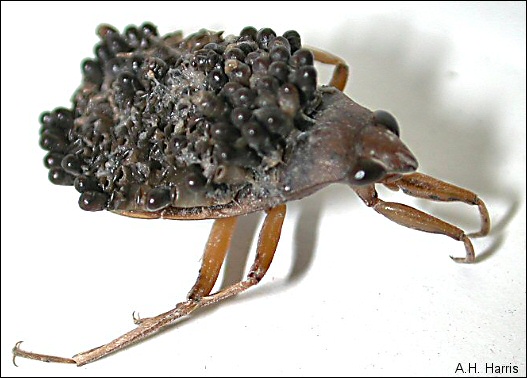
Scientists often are rather literal people, probably because accurate communication is vital in science. Sometimes, though, it also makes them a real pain. To the layperson, almost anything with a hard outer skeleton and six legs is a bug. Just don't call a beetle a bug around a biologist, or you'll almost certainly be corrected. Beetle, not bug!
Much to the confusion of the general public, scientific definitions tend to be much more restrictive than those of the non-scientist. As a familiar example, the word "theory" tends to mean a wild idea with no evidence to the everyday person, while in science it means the best explanation available of some phenomenon and is backed by a tremendous amount of evidence.
But back to bugs. These, to the biologist, are members of a group of
insects that are characterized by sucking mouthparts, among other features. A typical
example, the Squash Bug, will be familiar to any of you who've tried to raise
squashes and, unless drastic measures were taken, saw the vital juices sucked away and
the vines wither.

Contributor: Arthur H. Harris, Laboratory for Environmental Biology, Centennial Museum, University of Texas at El Paso.
Desert Diary is a joint production of the Centennial Museum and KTEP National Public Radio at the University of Texas at El Paso.

This belostomid aquatic bug, a fierce predator, is quite different from a Squash Bug, but a bug nonetheless. The females of some species will glue their eggs on the back of males, as seen here. Photograph by A.H. Harris.
Squash Bug Ohio State University Extension